Spine
Anatomy of the Spine (Lumbar, Cervical & Thoracic)
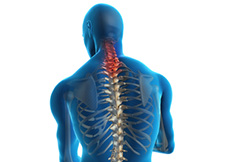
Cervical Spine Anatomy
The spine, also called the back bone, plays a vital role in stability, smooth movement and protection of the delicate spinal cord. It is made up of bony segments called vertebra with fibrous tissue called intervertebral discs between them. The vertebra and discs form the spinal column from the head to the pelvis, giving symmetry and support to the body.
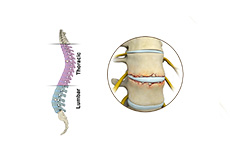
Thoracic Spine Anatomy
Thoracic spine is the central part of the spine, also called as dorsal spine, which runs from the base of the neck to the bottom of your rib cage. The thoracic spine provides flexibility that holds the body upright and protects the organs of the chest.
Spine is made up of 24 spinal bones, called as vertebra, of which, the thoracic region of the spine is made up of 12 vertebrae (T1-T12).
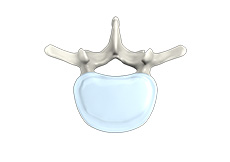
Lumbar Spine Anatomy
The spine, also called the back bone, plays a vital role in stability, smooth movement and protection of the delicate spinal cord. It is made up of bony segments called vertebra with fibrous tissue called intervertebral discs between them. The vertebra and discs form the spinal column from the head to the pelvis, giving symmetry and support to the body.
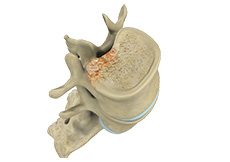
Spinal Tumors
Spine tumor is the abnormal growths of uncontrolled tissues or cells in and around the spinal cord. Tumors can either be cancerous (malignant) or non-cancerous (benign). Some of the commonly occurring benign spinal tumors are osteoma, osteoblastoma, hemangioma, and osteochondroma. Most commonly occurring malignant spinal tumors are chondrosarcoma, Ewing’s sarcoma, lymphoma, osteosarcoma, and multiple myeloma. Tumors that begin in the spine are called as primary spinal tumors.

Spinal Compression Fractures
A compression fracture of the back refers to broken vertebrae in the spine due to a traumatic accident or secondary to osteoporosis. In accidents or injuries, a heavy load on the vertebrae results in the fracture of the vertebral body. Patients suffering from osteoporosis have weak bones which may result in a compression fracture while performing their normal routine activities even in the absence of an injury.

Spinal Stenosis
Spinal stenosis is a condition caused from the vertebral column constricting and exerting pressure on the spinal cord or neural foramen (a bony tunnel through which a nerve exits the spinal cord). It usually affects the cervical and lumbar spine. If the spinal canal is narrowed, the disorder is called cervical/lumbar central stenosis. If the foramen is narrowed, it is referred to as cervical/lumbar foraminal stenosis.
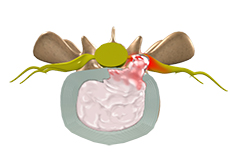
Disc Herniation
Disc herniation is the most common cause of back pain. The intervertebral discs are flat and round, present between vertebrae and act as shock absorbers when you walk or run. There is a soft, gelatinous material in the center (nucleus pulposus) which is encased in strong elastic tissue forming a ring around it called annulus fibrosus.
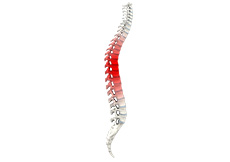
Spine Trauma
Spine trauma is damage to the spine caused from a sudden traumatic injury caused by an accidental fall or any other physical injury. Spinal injuries may occur while playing, performing normal activities, operating heavy machines, lifting heavy objects, driving automobiles, or when you suffer a fall. Injury to spine may cause various conditions including fractures, dislocation, partial misalignment (subluxation), disc compression (herniated disc), hematoma (accumulation of blood) and partial or complete tears of ligaments.

Scoliosis
Scoliosis is a condition characterized by abnormal curvature of the spine causing a deviation to one side. It causes a physical deformity making the spine look like the letter “C” or “S” instead of the letter “I”. Scoliosis can affect either the mid or the lower back, but the scoliosis of the mid back is more common. Scoliosis can occur at any age.

Failed Back Syndrome
The main goals of spine surgery are to relieve pain and improve spine stability. Pain is usually relieved by taking pressure off a compressed spinal nerve. Spine stability and pain control may be achieved by surgical fusion of the vertebrae. Success with the chosen procedure may vary depending on your condition. Failure mainly occurs because the source of pain was not properly identified.

Spondylolisthesis
Spondylolisthesis is a condition in which breakdown of the cartilage between the vertebrae of the spine causes one vertebra to slip out of place on top of the one below it. This causes misalignment and narrowing of the spinal column, a condition called spinal stenosis, which can put pressure on the nerves, resulting in pain in the buttocks or legs with walking or standing.

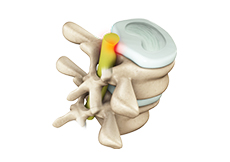
Radiculopathy
Radiculopathy is a condition where a nerve root in the spine is compressed, producing pain or weakness across the whole length of the nerve. It is sometimes referred to as a pinched nerve or sciatica. It occurs most commonly, but is not limited, to the lower back and neck.
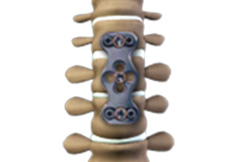
Anterior Cervical Discectomy and Fusion
Anterior cervical discectomy with fusion is an operative procedure to relieve compression or pressure on nerve roots and/or the spinal cord due to a herniated disc or bone spur in the neck.

Cervical Artificial Disc Replacement
Artificial Cervical Disc Replacement is a spine surgery involving the replacement of the degenerated disc, from the cervical region, with an artificial disc through an incision on the front of the neck. It is indicated in patients experiencing severe neck and arm pain along with numbness and weakness in the arm due to cervical radiculopathy (compression of the spinal nerves) and/or cervical myelopathy (compression of the spinal cord).
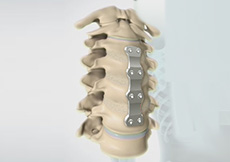
Cervical Corpectomy and Strut Graft
The cervical spine comprises the first 7 vertebrae of the spinal column. The vertebrae are separated from one another by shock absorbing pads called intervertebral discs. Over time, the discs can become worn out resulting in neck pain. Most patients with neck pain can be managed conservatively. However, surgery needs to be considered when the degenerative changes of the cervical spine exert excessive pressure on the spinal cord.

Cervical Discectomy
Cervical discectomy is a surgical procedure which relieves compression on the nerve roots and/or the spinal cord because of a herniated disc or a bone spur. This procedure involves making an incision on the front side of the neck (anterior cervical spine), followed by the removal of disc material and/or a portion of the bone around the nerve roots and/or spinal cord to relieve the compression on neural structures and provide them with an additional space.

Cervical Foraminotomy
Cervical foraminotomy is an operative procedure to relieve the symptoms of pinched or compressed spinal nerve by enlarging the neural foramen, an opening for the nerve roots to exit from the spine and travel throughout the body. The neural foramen forms a protective passageway for nerves that transmit signals among the spinal cord and the rest of the body parts.
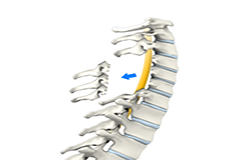
Cervical Laminectomy
A cervical laminectomy is an operative procedure of removing the bone at the neck (cervical spine) region to relieve pressure on the spinal nerves. It can also be performed to relieve the symptoms of narrowed spinal canal known as spinal stenosis.
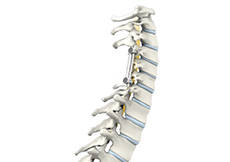
Posterior Cervical Fusion
Posterior cervical fusion (PCF), a surgical procedure performed through the back of the neck, involves joining or fusing two or more damaged cervical vertebrae. The fusion of vertebrae is also known as arthrodesis. Sometimes metallic plates may be used for fixing the vertebrae, this is also known as instrumentation.
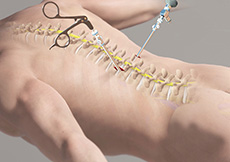
Minimally Invasive Spine Surgery
MISS is the latest advanced technology available to perform spinal surgeries through small, less than one inch long, incisions. It involves the use of special surgical instruments, devices and advanced imaging techniques to visualize and perform the surgery through such small incisions. MISS is aimed at minimizing damage to the muscles and surrounding structures.
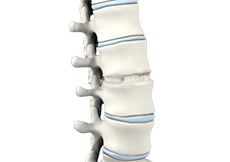
Anterior Lumbar Interbody Fusion
Anterior lumbar interbody fusion (ALIF) is a surgery performed to correct the spinal problems in the lower back. The surgery can be implemented either as an open surgery or minimally invasive technique.
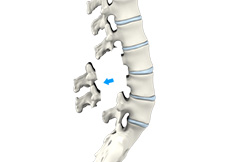
Lumbar Laminectomy (Minimally-Invasive)
Lumbar laminectomy, also known as decompression laminectomy, is a spinal surgery done to relieve excess pressure on the spinal nerve(s) in the lumbar (lower back) region.
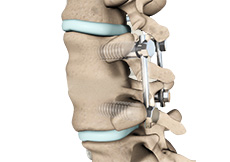
Posterior Lumbar Fusion
Spinal fusion, also called arthrodesis, is a surgical technique used to join two or more vertebrae (bones) within the spine. Lumbar fusion technique is the procedure of fusing the vertebrae in lumbar portion of the spine (lower back).
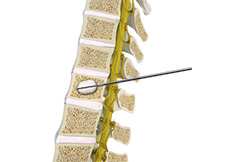
Kyphoplasty
Balloon kyphoplasty is a spine surgery that relieves back pain caused by a vertebral compression fracture. Osteoporosis (bone disease) is the primary cause of vertebral compression fractures. Other causes include trauma such as a fall or motor vehicle accident, and some types of cancers affecting the spinal vertebrae. The aim of balloon kyphoplasty is to relieve pain, stabilize the fracture and restore the vertebral body height.
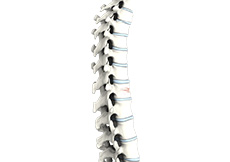
Vertebroplasty
Osteoporosis is a “silent” disease characterized by weakening of bones, making them more susceptible to fractures, typically in the hip and spine. Elderly people and especially post-menopausal women are at greater risk of developing osteoporosis.
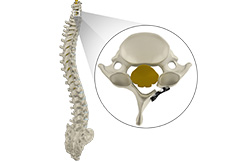
Cervical Laminoplasty
A cervical laminoplasty is an operative procedure that involves reshaping/repositioning the bone at the neck region (cervical spine) to relieve excess pressure on the spinal nerves. It can also be performed to relieve the symptoms of narrowed spinal canal known as spinal stenosis.

Lumbar TLIF (Transforaminal Interbody Fusion)
Transforaminal lumbar interbody fusion (TLIF) is a type of spinal fusion procedure in which bone graft is placed between the affected lumbar vertebrae through a posterior incision on the patient's back. The term transforaminal lumbar interbody fusion itself indicates:

Complex Cervical and Lumbar Reconstruction
Coming Soon

Intraoperative Monitoring
Coming Soon

Microscopic Discectomy
Coming Soon

Percutaneous Fusion
Coming Soon

X-Stop Lumbar Stenosis Treatment
Coming Soon


